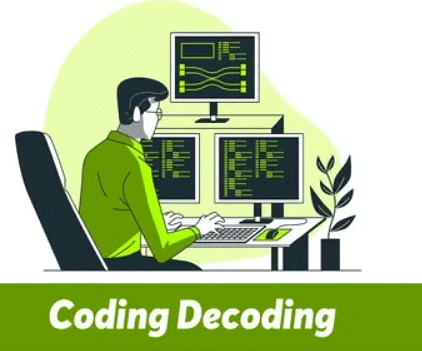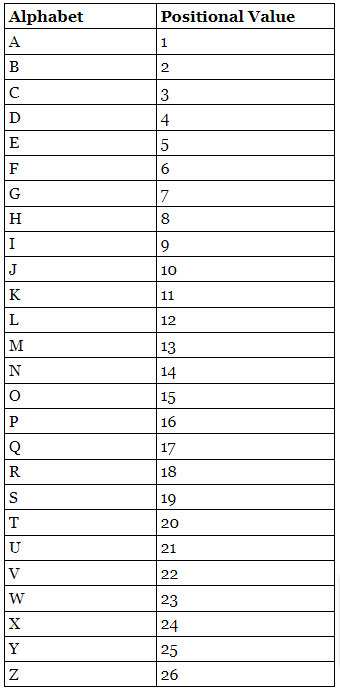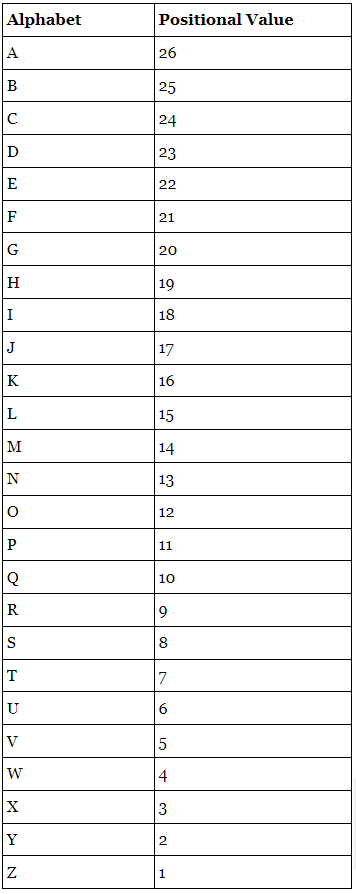Overview: Coding-Decoding | Logical Reasoning for CLAT PDF Download
| Table of contents |

|
| Coding-Decoding |

|
| Types of Coding Decoding Questions |

|
| How to Solve Coding Decoding Questions in Reasoning– Tips and Tricks |

|
| Common Mistakes to Avoid |

|
| Sample Coding Decoding Questions |

|
Coding-Decoding
- Coding-decoding involves converting words, letters, or sentences into a specific code based on established rules. This ensures that only the intended recipient can comprehend the information.
- Mastering coding-decoding can enhance candidates' logical reasoning abilities and their capacity to concentrate.
- Coding refers to the practice of writing a letter, word, or sentence in a manner that obscures its true meaning from everyone except the intended reader.
- Conversely, decoding entails expressing a letter, word, or sentence in a way that conceals its actual meaning from others, except for the designated individual.

To solve the coding decoding reasoning questions, first of all it is necessary to remember the positions of all alphabetical letters, both in forward and backward order, which is given below.
Positional Value of Alphabets in forward direction

Positional Value of Alphabets in backward direction

Types of Coding Decoding Questions
As now we know what consists of the questions related to the Coding-Decoding reasoning section. Let us see the various types of reasoning questions on coding decoding one by one below:
1. Letter to Letter Coding
In this type of coding and decoding reasoning, the alphabets of a word are coded with the help of different operations such as addition, subtraction, interchanging, and so on. Candidates need to find the code of another word using the same operations.
2. Letter to Number Coding
In this type of coding decoding reasoning, either numerical code values are assigned to a word or alphabetical code letters are assigned to the number.
3. Substitutional Coding
In these type of coding decoding questions, words are encrypted or coded with the suitable word.
4. Chinese Coding
In these type of coding and decoding reasoning questions, a few statements consisting of the same words but in different order will be coded as words or symbols or letters. Candidates need to find the codes of words by finding the common words in different statements as the code of a word in both the statements will be the same.
5. LSN Coding
In this type of coding decoding reasoning, words of different statements are coded with letters, symbols and numbers by using different operations. Candidates need to find the logic used for letter, symbol, and number.
6. Conditional Coding
In this type of coding decoding reasoning, a few operations will be given and candidates need to apply all the given conditions to find the code of a given word.
7. Clock Coding
In these type of coding decoding questions, numbers between 1 to 12 are coded and the questions will be asked on the basis of clock time.
8. Binary Coding
In these type of coding decoding reasoning questions, decimal numbers are coded by binary numbers such as 0 and 1.
How to Solve Coding Decoding Questions in Reasoning– Tips and Tricks
Candidates can find various tips and coding decoding reasoning tricks from below for solving the questions related to this section.
Tip # 1: EJOTY will help the candidates to find nearby letters quickly. The same is given below.

Tip # 2: To solve the Letter-to-Letter coding decoding questions quickly, candidates need to check if the opposite letters are given in the code. Then candidates need to check if the position of letters is interchanged. Finally check if operations like addition or subtraction is applied.
Tip # 3: To solve the letter to number type coding and decoding reasoning questions quickly, candidates first need to check if the positional values of letters are given in the code. Then check if the position of positional values of letters are interchanged. Check if the positional values of letters are reversed alphabetical series. Check if the position of positional values of letters are interchanged. Finally check if operations like addition, subtraction or multiplication is applied.
Common Mistakes to Avoid
Misinterpreting Positional Values: Confusing forward (A=1) and backward (A=26) values.
Ignoring Operations: Forgetting to apply digit sums (e.g., X=24 → 2+4=6) in letter-to-number coding.
Overlooking Patterns: Missing simple patterns like opposite letters (A=Z) or fixed shifts (+2).
Rushing Chinese Coding: Failing to identify common words across statements, leading to incorrect code assignments.
Clock Coding Errors: Miscalculating opposites on a clock (e.g., 3 and 9 are opposites, not 3 and 6).
Sample Coding Decoding Questions
Example1: In the following questions find out the alternatives which will replace the question mark.ENGLISH : FOHNHRG :: SCIENCE : ?
Sol: Here ENGLISH is written as follows. If we follow the same principle for SCIENCE then we get the word TDJGMBD. Hence, it is the correct answer.
If we follow the same principle for SCIENCE then we get the word TDJGMBD. Hence, it is the correct answer.
Example 2: In a certain code language, “if FRIEND” is written as “UIRVMW”, then how is “TRADER” will be written in that code language?
Sol: The pattern used in this question is opposite to that letter such as
Therefore, TRADER will be coded as GIZWVI.
Example 3: If the word ‘EXAMINATION’ is coded as 56149512965, then the word ‘GOVERNMENT’ is coded as:
(a) 7645954552
(b) 7654694562
(c) 7645965426
(d) 7654964526
Sol: Option (a)
We are given that, ‘EXAMINATION’ = 56149512965
We can see that number places according to alphabetical order of E = 5, X = 24, A = 1, M = 13, I = 9, N = 14, T = 20, O = 15.
We can see the pattern as if the number > 9, then sum of the digit is assigned to that letter.
If the number place < 9, the number place is assigned to that letter.
In GOVERNMENT, G = 7, O = 1+5 = 6, V = 2+2 = 4, E = 5, R = 1+8 = 9, N = 1+4 = 5, M = 1+3 = 4, E = 5, N = 1+4 = 5, T = 2+0 = 2
Therefore, the code for ‘GOVERNMENT’ = 7645954552.
Hence, option A is the correct answer.
|
38 videos|149 docs|75 tests
|
FAQs on Overview: Coding-Decoding - Logical Reasoning for CLAT
| 1. What is coding-decoding? |  |
| 2. What are the different types of coding-decoding questions? |  |
| 3. How can I solve coding-decoding questions effectively? |  |
| 4. Can coding-decoding questions be asked in competitive exams? |  |
| 5. Are there any tips to improve my coding-decoding skills? |  |




















